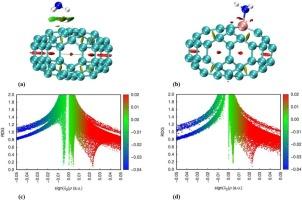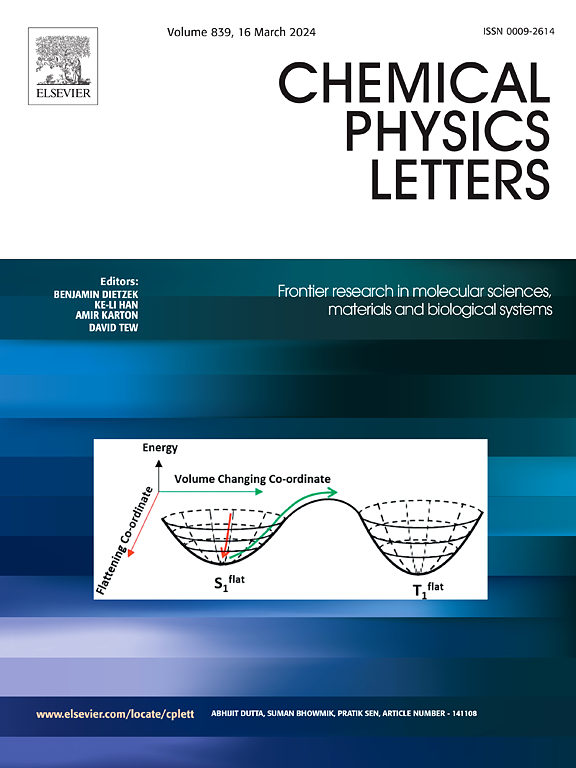Selective detection of NH₃ over H2S, HCl, CO2, and NO2 using boron-doped T-graphene nanocages: A DFT study
IF 3.1
3区 化学
Q3 CHEMISTRY, PHYSICAL
引用次数: 0
Abstract
We employed density functional theory (DFT) to develop a boron-doped T-graphene nanocage (BTG) as a sensor for NH3 detection. Boron doping introduces an electron-deficient site that enhances adsorption energy (Eads = −17.9 kcal/mol) and reduces the energy gap (Eg) by 12.6 %. The BTG demonstrates strong electrical conductivity and confirms charge transfer from NH3 to boron. Furthermore, it exhibits exceptional selectivity against interference from CO2, H2S, HCl, and NO2, along with a rapid recovery time of 13.2 s under visible light. This makes it a promising candidate for gas sensing in ambient conditions.

硼掺杂t -石墨烯纳米笼对H2S、HCl、CO2和NO2的选择性检测:DFT研究
我们利用密度泛函理论(DFT)开发了一种掺硼t -石墨烯纳米笼(BTG)作为NH3检测传感器。硼掺杂引入了一个缺电子位点,提高了吸附能(Eads = - 17.9 kcal/mol),减少了12.6%的能隙(Eg)。BTG表现出很强的导电性,并证实电荷从NH3转移到硼。此外,它对CO2、H2S、HCl和NO2的干扰具有优异的选择性,在可见光下恢复时间为13.2 s。这使其成为环境条件下气体传感的有希望的候选者。
本文章由计算机程序翻译,如有差异,请以英文原文为准。
求助全文
约1分钟内获得全文
求助全文
来源期刊

Chemical Physics Letters
化学-物理:原子、分子和化学物理
CiteScore
5.70
自引率
3.60%
发文量
798
审稿时长
33 days
期刊介绍:
Chemical Physics Letters has an open access mirror journal, Chemical Physics Letters: X, sharing the same aims and scope, editorial team, submission system and rigorous peer review.
Chemical Physics Letters publishes brief reports on molecules, interfaces, condensed phases, nanomaterials and nanostructures, polymers, biomolecular systems, and energy conversion and storage.
Criteria for publication are quality, urgency and impact. Further, experimental results reported in the journal have direct relevance for theory, and theoretical developments or non-routine computations relate directly to experiment. Manuscripts must satisfy these criteria and should not be minor extensions of previous work.
 求助内容:
求助内容: 应助结果提醒方式:
应助结果提醒方式:


